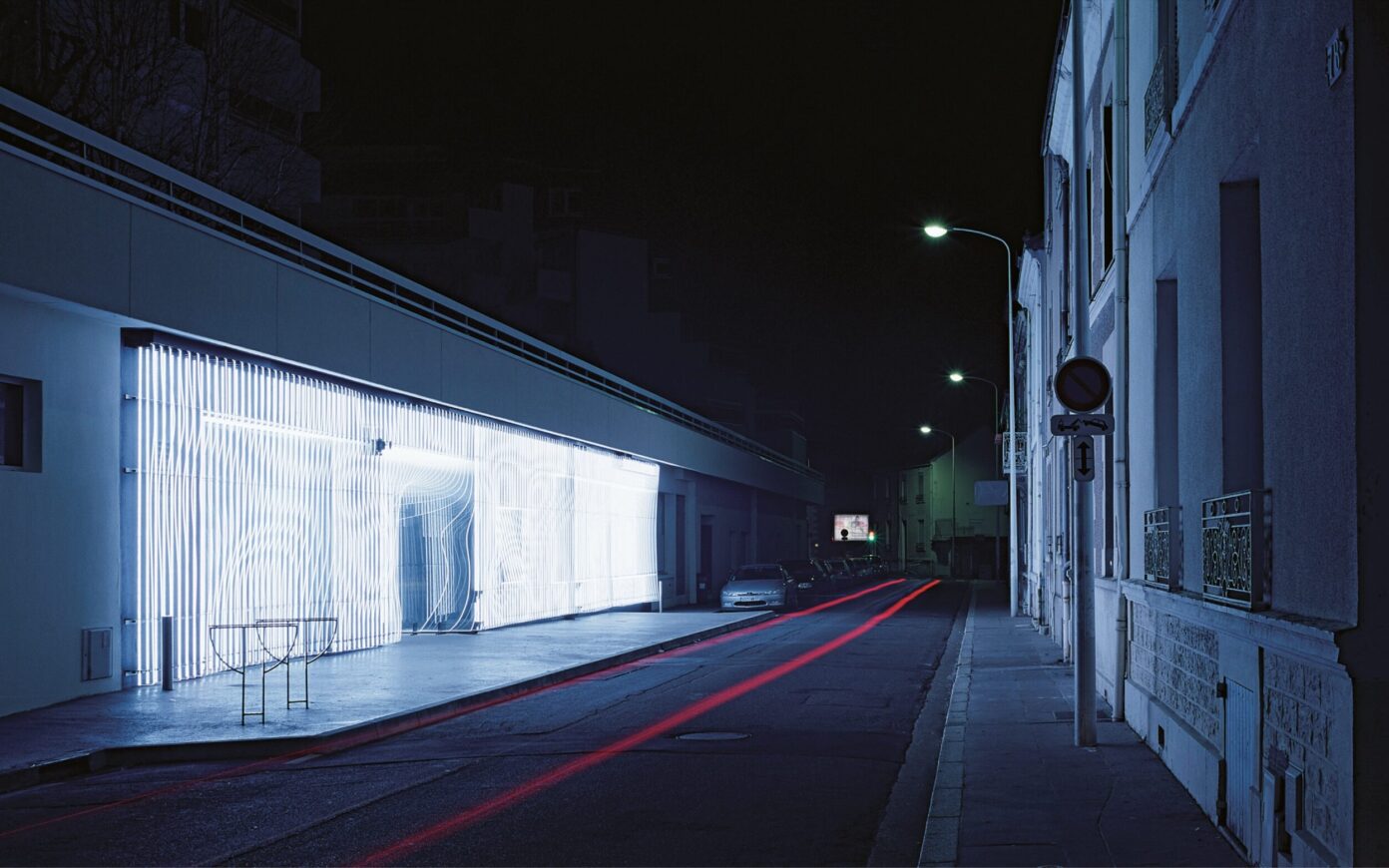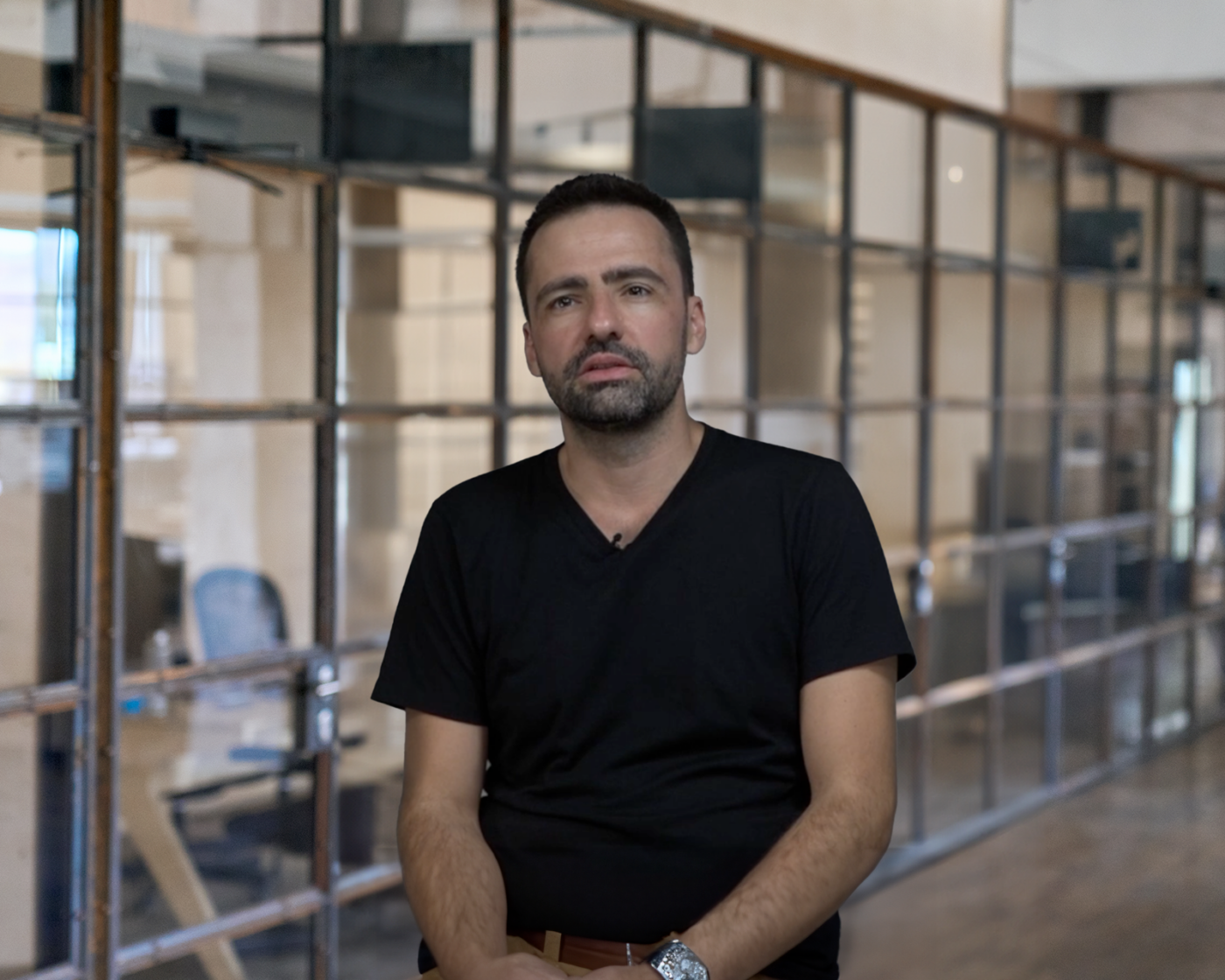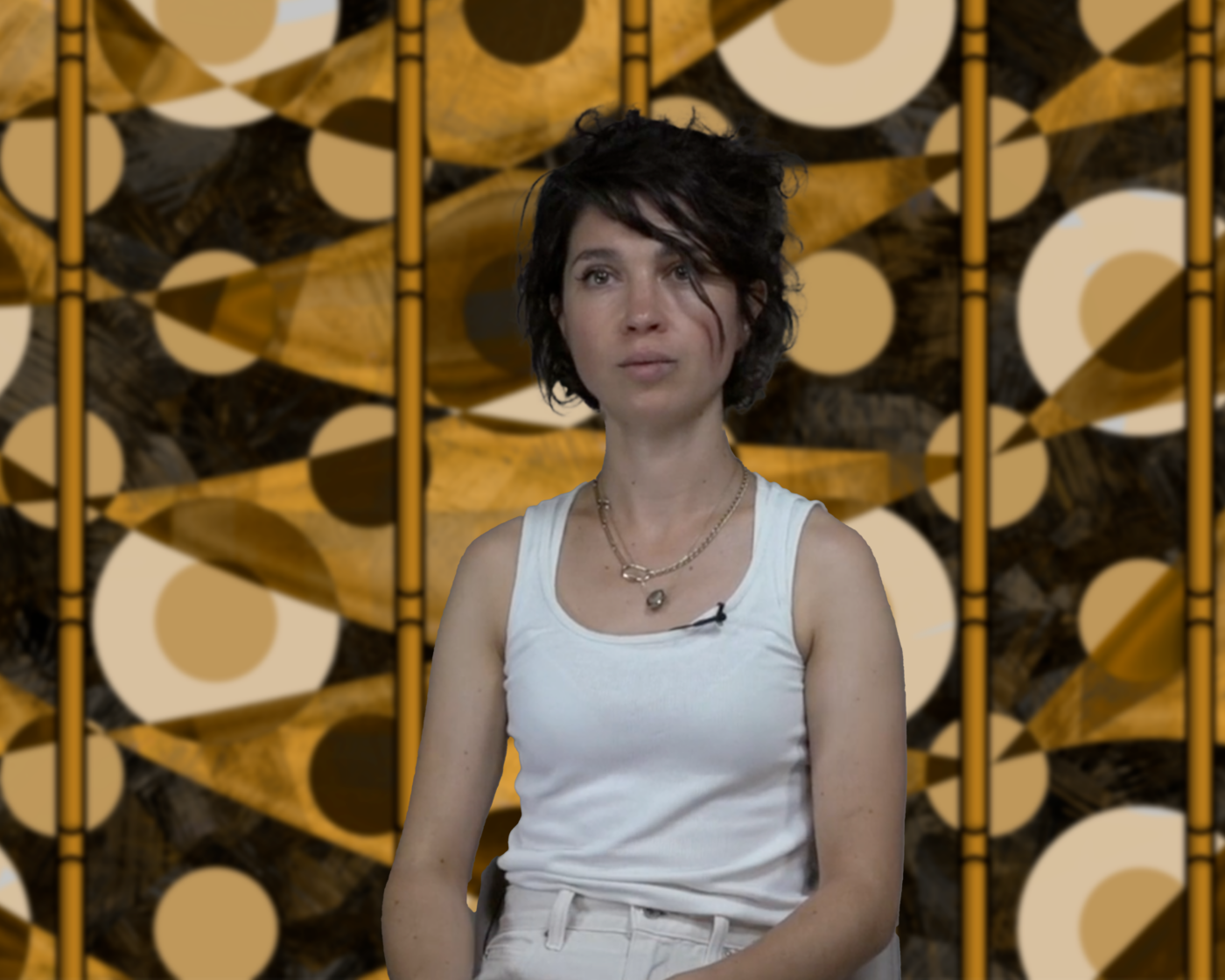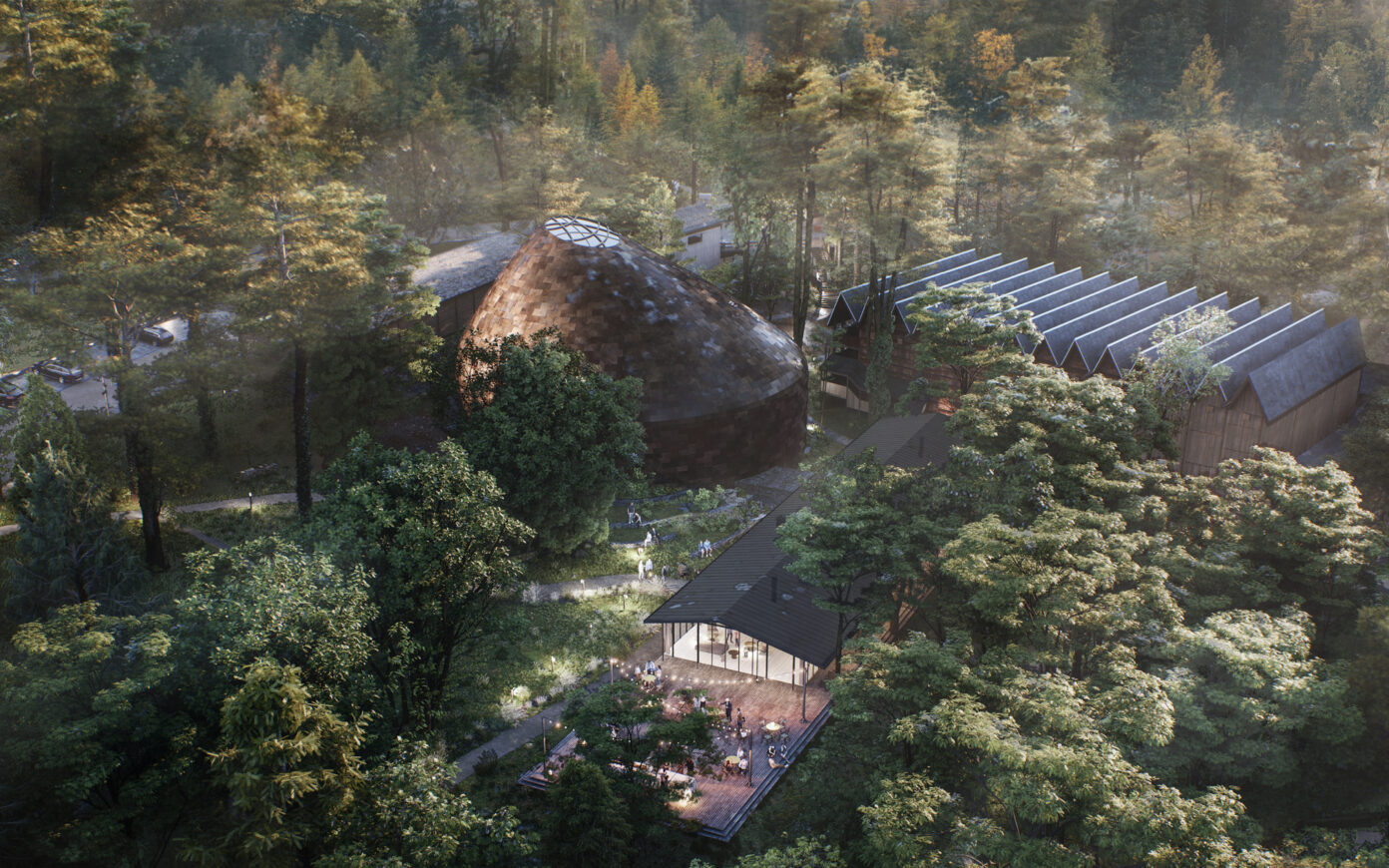La Source Vive is a new concert hall dedicated to chamber music located in Évian. The result of a collaboration between architects Patrick Bouchain and Philippe Chiambaretta. Its conch-like form is the outcome of sensory experimentation and scientific analysis aimed at achieving exceptional acoustics while blending seamlessly into its scenic surroundings. The project is housed by the Évian Resort and embodies Aline Foriel-Destezet’s commitment to promoting music. Born of her desire to support the creation of an architectural complex featuring a unique concert hall in service of a major music project, La Source Vive will be located at the Mélèzes site, in the close vicinity of La Grange au Lac, another iconic music venue designed thirty years ago by Patrick Bouchain. Together, they will form an exceptional architectural complex dedicated to music—two complementary facilities within the same institution working together to provide a complete, open, and supportive musical experience.
Parametric design

The Center for Contemporary Creation (CCC) of Tours occupied a dilapidated location that was devoid of identity. PCA-STREAM conducted an experimental reflection on the identity of this place of artistic production, eventually leading to an architectural project of a second skin for the façade. One hundred and fifty blades of LED-backlit Plexiglas make up an organic and shifting scenery that interacts with the street and the public. This hybrid object between sculpture and architecture has become the emblem of the CCC.

Representing modularity
Pablo Valbuena is a visual artist. He creates rhythmic light installations to represent time and movement, altering our perceptions of space. His “illusions” distort reality and reveal imperceptible information. We collaborated together on the creation of the Modulation artwork, a series of luminous combinations evoking modularity.

Modeling the City Using Proteins
Researcher Claire Lesieur works at the CNRS Ampère Laboratory on the Go Pro project, which applies a computational model developed for protein folding to urban environments. The shape-changing properties of proteins are put to use in an attempt to map out the opportunities for urban growth that don’t involve urban sprawl.

Talking Data
Caroline Goulard is a data journalist and co-founder of Dataveyes. She turns collected data into digital experiences to make it more understandable for everyone. Thanks to new ways of visualization, it is now possible to understand a population’s needs and to develop services that anticipate new uses.
“ Biomimicry applied to the neighbourhood means taking inspiration from the way an ecosystem functions. ”
“ Biomimicry applied to the neighbourhood means taking inspiration from the way an ecosystem functions. ”
Conceiving the urban environment as an ecosystem
Biomimicry consists in reproducing not the forms but the functions of nature. On a neighborhood’s scale, it involves drawing inspiration from an ecosystem’s dynamics, which Eduardo Blanco, environmental engineer, calls “regenerative urban projects.” But how can we evaluate the effectiveness of this design method and how can we measure its success over time? READ THE TRANSCRIPT


Inhabiting Urban Mobility
We are faced with the need to bring about a behavioral shift to support the ecological, urban, and economic transitions. Given that space influences behavior, Sonia Lavadinho calls for a “relational city” to kickstart the process. Like the city itself, mobility could be perceived as not only functional, but as something that can take on a new dimension, as events. Enriching the urban experience through a proliferation of micro-events and social interactions would then change our spatiotemporal relationship to the city and foster better social behavior.
Explorer Tous les tags
 stream voices
stream voices
Eager to share more generously the results of its collaborations and research, PCA-STREAM publishes STREAM VOICES, its online magazine!
